 Search by Keyword
Sign Up Below for our MONTHLY BEATLES TRIVIA QUIZ!
|
“YOU WON’T SEE ME”
(John Lennon – Paul McCartney)
 In the later months of 1964, The Beatles were feeling the immense pressure of fulfilling the deadline to complete their year-end British album “Beatles For Sale.” A nine-hour recording session was scheduled on October 18th of that year to knock out as many songs as possible, most of them cover songs due to their not being able to come up with enough original material to fill the album. They made it by the skin of their teeth, even recording their end-of-the-year single “I Feel Fine” in the process. In the later months of 1964, The Beatles were feeling the immense pressure of fulfilling the deadline to complete their year-end British album “Beatles For Sale.” A nine-hour recording session was scheduled on October 18th of that year to knock out as many songs as possible, most of them cover songs due to their not being able to come up with enough original material to fill the album. They made it by the skin of their teeth, even recording their end-of-the-year single “I Feel Fine” in the process.
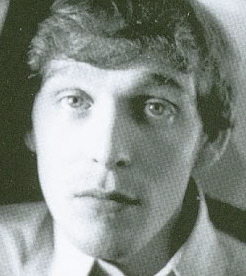 The later months of 1965 saw the group facing a similar time crunch, but not with the same desperation. Road Manager Neil Aspinall explained in October of 1965, “Songs, these days, are no problem for The Beatles. It just seems to get easier every month. Of course, they have more time now. Back in…’64, they had to write numbers late at night in hotel rooms. They would work into the early hours of the morning and, in the dead of night, you would hear Paul yell across the room, something like, ‘Hey John. What rhymes with girl?’ Nowadays, they get together at John’s house and there are no interruptions, no guitars tuning in their ears and no bangs on the door for autographs. They have complete peace and quiet and this has been one big reason why they got half of the songs for these sessions written in one week, which is very good going.” The later months of 1965 saw the group facing a similar time crunch, but not with the same desperation. Road Manager Neil Aspinall explained in October of 1965, “Songs, these days, are no problem for The Beatles. It just seems to get easier every month. Of course, they have more time now. Back in…’64, they had to write numbers late at night in hotel rooms. They would work into the early hours of the morning and, in the dead of night, you would hear Paul yell across the room, something like, ‘Hey John. What rhymes with girl?’ Nowadays, they get together at John’s house and there are no interruptions, no guitars tuning in their ears and no bangs on the door for autographs. They have complete peace and quiet and this has been one big reason why they got half of the songs for these sessions written in one week, which is very good going.”
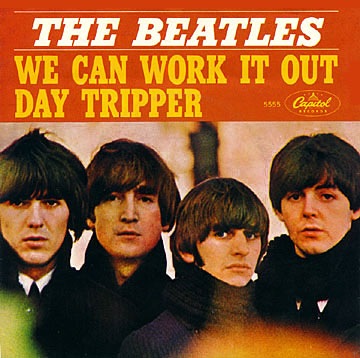 As the deadline for their latest album “Rubber Soul” was approaching, the group scheduled what became a thirteen-hour recording session to complete it. This time, though, no cover songs were needed. All original material filled the fourteen tracks of the British album, as well as the two additional original songs that graced both sides of their latest single, namely “We Can Work It Out” and “Day Tripper.” As the deadline for their latest album “Rubber Soul” was approaching, the group scheduled what became a thirteen-hour recording session to complete it. This time, though, no cover songs were needed. All original material filled the fourteen tracks of the British album, as well as the two additional original songs that graced both sides of their latest single, namely “We Can Work It Out” and “Day Tripper.”
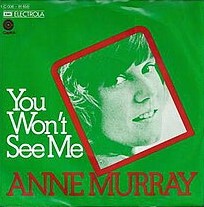 For this final marathon session, Paul McCartney came up with a song that was apparently finished at the last minute entitled “You Won’t See Me.” Approximately five-and-a-half hours later, the song was complete and deemed good enough to be positioned as the third track on the album. While the song was not released as a single for the group, it was good enough to become an American Top 10 smash (#8 on the Billboard Hot 100) by country superstar Anne Murray in 1974. Songwriting had indeed become “second nature” for John and Paul. For this final marathon session, Paul McCartney came up with a song that was apparently finished at the last minute entitled “You Won’t See Me.” Approximately five-and-a-half hours later, the song was complete and deemed good enough to be positioned as the third track on the album. While the song was not released as a single for the group, it was good enough to become an American Top 10 smash (#8 on the Billboard Hot 100) by country superstar Anne Murray in 1974. Songwriting had indeed become “second nature” for John and Paul.

Jane Asher
Songwriting History
“Paul,” was John Lennon’s only response when asked about the songwriting of “You Won’t See Me” in 1980. “It was 100 per cent me as I recall,” Paul agrees, “but I am always quite happy to give John a credit because there’s always a chance that on the session he might have said, ‘That’d be better.’”
 Paul McCartney’s co-authored book “Many Years From Now” affirms that this song was written in the small music room at 57 Wimpole Street in London, which was the family home of Paul’s girlfriend Jane Asher where he was living at the time. The completion of this composition may have occurred just prior to The Beatles entering the recording studio on the day they recorded the song, which was on November 11th, 1965. Paul McCartney’s co-authored book “Many Years From Now” affirms that this song was written in the small music room at 57 Wimpole Street in London, which was the family home of Paul’s girlfriend Jane Asher where he was living at the time. The completion of this composition may have occurred just prior to The Beatles entering the recording studio on the day they recorded the song, which was on November 11th, 1965.
 On this particular day, Jane Asher was in Bristol performing in the play “Great Expectations” at the Theatre Royal. As Barry Miles writes in “Many Years From Now,” “In October 1965 Jane had joined the Bristol Old Vic and was deeply involved in her career as an actress. She spent most of her time in Bristol…The majority of Jane’s friends were in the theatre. She did not take drugs and clearly felt increasingly alienated from Paul’s drug-taking friends. The relationship hung on, in part, because they were apart so often: if Jane was in a play, Paul would not see much of her unless he attended a performance…They really only saw each other properly on special occasions like holidays.” On this particular day, Jane Asher was in Bristol performing in the play “Great Expectations” at the Theatre Royal. As Barry Miles writes in “Many Years From Now,” “In October 1965 Jane had joined the Bristol Old Vic and was deeply involved in her career as an actress. She spent most of her time in Bristol…The majority of Jane’s friends were in the theatre. She did not take drugs and clearly felt increasingly alienated from Paul’s drug-taking friends. The relationship hung on, in part, because they were apart so often: if Jane was in a play, Paul would not see much of her unless he attended a performance…They really only saw each other properly on special occasions like holidays.”
Although Paul never confirmed as much, it is commonly assumed that “You Won’t See Me” was written about their strained relationship at the time. Her supposed unavailability to take his phone calls may very well have been the propelling motivation to the song's lyrics.
 As for the melody, however, Paul explains this in great detail. “Normally I write on a guitar and have full chords, or on the piano and have full chords, but this was written around two little notes, a very slim phrase, a two-note progression that I had very high on the first two strings of the guitar: the E and the B strings. I had it up on the high E position, and I just let the note on the B string descend a semitone at a time, and kept the top note the same, and against that I was playing a descending chromatic scale. Then I wrote the tune for ‘You Won’t See Me’ against it. I changed it but it was still a two-note thing but instead of it going down I pushed it up and then came down again; just a slight variation.” Got it? As for the melody, however, Paul explains this in great detail. “Normally I write on a guitar and have full chords, or on the piano and have full chords, but this was written around two little notes, a very slim phrase, a two-note progression that I had very high on the first two strings of the guitar: the E and the B strings. I had it up on the high E position, and I just let the note on the B string descend a semitone at a time, and kept the top note the same, and against that I was playing a descending chromatic scale. Then I wrote the tune for ‘You Won’t See Me’ against it. I changed it but it was still a two-note thing but instead of it going down I pushed it up and then came down again; just a slight variation.” Got it?
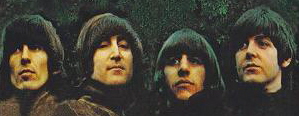 It seems apparent that, with all this detail regarding the melodic structure, “You Won’t See Me” may very well have been in the works for some time and then finished up by Paul when there was an urgent need for last-minute material for the “Rubber Soul” album. Therefore, we can say with a degree of confidence that the song was written within the months of October and November of 1965. It seems apparent that, with all this detail regarding the melodic structure, “You Won’t See Me” may very well have been in the works for some time and then finished up by Paul when there was an urgent need for last-minute material for the “Rubber Soul” album. Therefore, we can say with a degree of confidence that the song was written within the months of October and November of 1965.
Recording History
 Even though their recording session the previous day lasted until 4:00 in the morning, The Beatles knew that this day, November 11th, 1965, was the absolute deadline to complete their album “Rubber Soul.” Therefore they entered EMI Studio Two at 6 pm for what turned out to be a thirteen hour session to finish the album. Approximately the first five hours, from 6 to 11 pm, were used for fully recording Paul’s latest composition “You Won’t See Me,” the writing of which had most likely been completed just before the session began. Even though their recording session the previous day lasted until 4:00 in the morning, The Beatles knew that this day, November 11th, 1965, was the absolute deadline to complete their album “Rubber Soul.” Therefore they entered EMI Studio Two at 6 pm for what turned out to be a thirteen hour session to finish the album. Approximately the first five hours, from 6 to 11 pm, were used for fully recording Paul’s latest composition “You Won’t See Me,” the writing of which had most likely been completed just before the session began.
Only two takes of the rhythm track were needed to get a complete recording of the song ready for overdubs. The rhythm track consisted of Paul on piano, George on his Fender Stratocaster, Ringo on drums and John on tambourine. Even though the track noticeably slows down during its duration (from 119 to 113 beats per minute), "take two" was deemed the best.
 A number of overdubs then occupied the remaining time, including Paul’s main vocals which he then double-tracked, slipping into harmony in strategic spots, and his intricate bass guitar part. John and George overdubbed background harmonies throughout the song, which included their falsetto “ooh, la, la, la” lines (not unlike the background vocals on the recently recorded “Nowhere Man”), as well as finishing off the verses with ascending “you won’t see me” harmonies and ending the bridges with two “no I wouldn’t” phrases. A number of overdubs then occupied the remaining time, including Paul’s main vocals which he then double-tracked, slipping into harmony in strategic spots, and his intricate bass guitar part. John and George overdubbed background harmonies throughout the song, which included their falsetto “ooh, la, la, la” lines (not unlike the background vocals on the recently recorded “Nowhere Man”), as well as finishing off the verses with ascending “you won’t see me” harmonies and ending the bridges with two “no I wouldn’t” phrases.
 Two more overdubs were also added to complete the picture. Ringo added a three-beat hi-hat accent towards the end of every measure of the verses except the final four (when the title of the song is repeated four times). When the bridges came around, he changed it up to add a five-beat hi-hat accent in the middle of each measure. Roadie Man Evans also plays a Hammond Organ overdub on the track, which actually consists of a single note (“A”) held throughout the last verse and until the song fades out. So proud were The Beatles that their roadie had contributed musically to the track that he was credited as "'Organ' Evans" on the back cover of the album. Two more overdubs were also added to complete the picture. Ringo added a three-beat hi-hat accent towards the end of every measure of the verses except the final four (when the title of the song is repeated four times). When the bridges came around, he changed it up to add a five-beat hi-hat accent in the middle of each measure. Roadie Man Evans also plays a Hammond Organ overdub on the track, which actually consists of a single note (“A”) held throughout the last verse and until the song fades out. So proud were The Beatles that their roadie had contributed musically to the track that he was credited as "'Organ' Evans" on the back cover of the album.
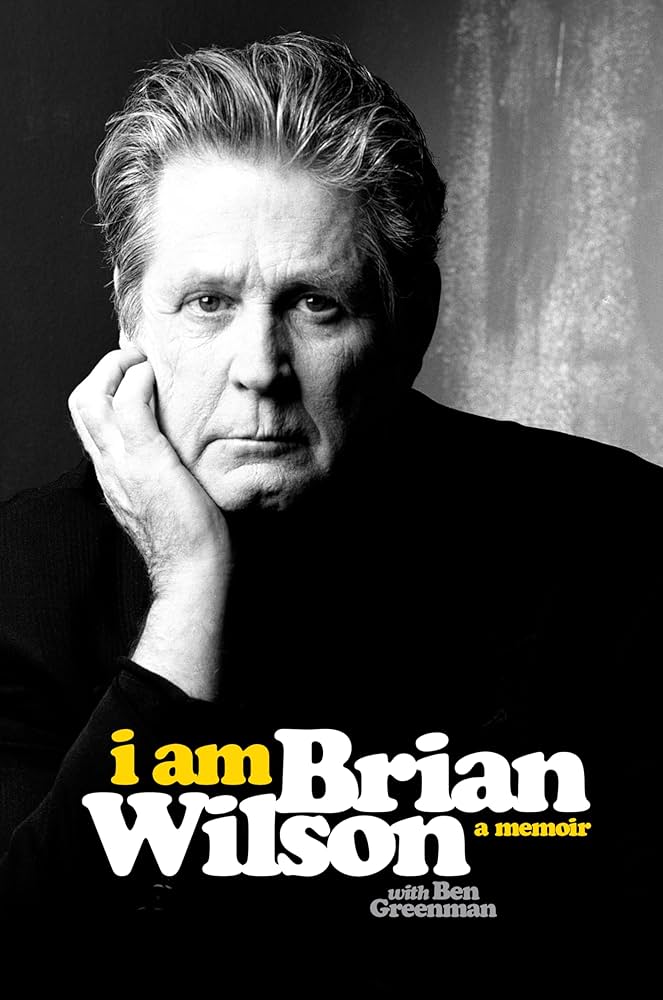 This single organ note blends very well with the background harmonies so that it isn’t all that noticeable (Mark Lewisohn claims that “no such sound is detectable” in his book “The Beatles Recording Sessions”) but can easily be heard in the final four measures of the final verse on the left channel in the stereo mix. One person who did notice the Mal Evans organ contribution was Brian Wilson, who writes in his book "I Am Brian Wilson: A Memoir," "There's an organ drone in there, a note that's held down for the last third of the song or so. Those were touches they were trying, almost art music." This single organ note blends very well with the background harmonies so that it isn’t all that noticeable (Mark Lewisohn claims that “no such sound is detectable” in his book “The Beatles Recording Sessions”) but can easily be heard in the final four measures of the final verse on the left channel in the stereo mix. One person who did notice the Mal Evans organ contribution was Brian Wilson, who writes in his book "I Am Brian Wilson: A Memoir," "There's an organ drone in there, a note that's held down for the last third of the song or so. Those were touches they were trying, almost art music."
 After the song was complete, they started and finished John's new contribution "Girl" as well as finishing the previously begun recordings "Wait" and "I'm Looking Through You." By 7 o'clock the next morning, they finally stumbled home knowing that their latest album was complete. After the song was complete, they started and finished John's new contribution "Girl" as well as finishing the previously begun recordings "Wait" and "I'm Looking Through You." By 7 o'clock the next morning, they finally stumbled home knowing that their latest album was complete.
 Both the mono and stereo mixes were hurriedly performed on November 15th, 1965 in the control room of EMI Studio One by producer George Martin and engineers Norman Smith and Richard Lush. They manually faded both mixes at the end of the song, the mono mix being slightly longer than the stereo. A faintly heard cough is detected from one of the vocal tracks on both mixes just before Paul’s first words “when I call…” While this could have easily been eliminated from the mixes by turning down that track until the vocals kicked in, the urgent need for these mixes meant it was good enough. Both the mono and stereo mixes were hurriedly performed on November 15th, 1965 in the control room of EMI Studio One by producer George Martin and engineers Norman Smith and Richard Lush. They manually faded both mixes at the end of the song, the mono mix being slightly longer than the stereo. A faintly heard cough is detected from one of the vocal tracks on both mixes just before Paul’s first words “when I call…” While this could have easily been eliminated from the mixes by turning down that track until the vocals kicked in, the urgent need for these mixes meant it was good enough.
 Apart from a quick mix of the unused song “12-Bar Original” that was made five days later, this mixing session was the last task engineer Norman Smith would perform for The Beatles. While he was their official engineer for almost every Beatles session since June 6th, 1962, he went on to bigger and better things as a producer (most notably for Pink Floyd) and performer (most notably for his #3 US smash hit “Oh, Babe, What Would You Say?” under the pseudonym “Hurricane Smith”). Apart from a quick mix of the unused song “12-Bar Original” that was made five days later, this mixing session was the last task engineer Norman Smith would perform for The Beatles. While he was their official engineer for almost every Beatles session since June 6th, 1962, he went on to bigger and better things as a producer (most notably for Pink Floyd) and performer (most notably for his #3 US smash hit “Oh, Babe, What Would You Say?” under the pseudonym “Hurricane Smith”).
 A further mix of the song was made in 1986 by George Martin in preparation for the “Rubber Soul” album being released on compact disc for the first time. While the mix is superior in many ways, the cough at the beginning of the song is still present, even after the album was remastered for its 2009 re-release. A further mix of the song was made in 1986 by George Martin in preparation for the “Rubber Soul” album being released on compact disc for the first time. While the mix is superior in many ways, the cough at the beginning of the song is still present, even after the album was remastered for its 2009 re-release.
Song Structure and Style
 The song “You Won’t See Me” follows a familiar structure within The Beatles songbook, namely the ‘verse/ verse/ bridge/ verse/ bridge/ verse’ format (or aababa). A short introduction and conclusion round out the standard structure. No solo or instrumental section is needed due to the quite lengthy, but structurally appropriate, verses. The song “You Won’t See Me” follows a familiar structure within The Beatles songbook, namely the ‘verse/ verse/ bridge/ verse/ bridge/ verse’ format (or aababa). A short introduction and conclusion round out the standard structure. No solo or instrumental section is needed due to the quite lengthy, but structurally appropriate, verses.
A quick two-measure introduction is first heard which is actually a foreglimpse of the final two measures of each verse minus the vocals. With crashing cymbals and accented syncopation of the other main instruments, this is quite a startling beginning to the song. The melodic phrase used for the title of the song is actually heard in this introduction, the first two crashing chords representing the words “you won’t” while John’s tambourine hits represent “see me.” Afterwards, Ringo taps out a simple snare and tom beat (with a simple descending bass line from Paul) to usher in the first verse.
Actually, we hear the first three words of the first verse (“when I call”) before the first verse begins. In fact, nearly every phrase Paul sings in every verse comes in before the downbeat, the exception being when the title of the song is heard.
 When the first verse begins, the listener becomes accustomed to the instrumentation that we will hear throughout the entire song, which is Paul on piano as well as his Hofner bass, George on syncopated guitar chops, Ringo on drums with overdubbed hi-hat accents and John on tambourine low in the mix. Paul’s vocals are double-tracked and sung in unison throughout with the exception of when the title of the song is emphasized twice at the end. When the first verse begins, the listener becomes accustomed to the instrumentation that we will hear throughout the entire song, which is Paul on piano as well as his Hofner bass, George on syncopated guitar chops, Ringo on drums with overdubbed hi-hat accents and John on tambourine low in the mix. Paul’s vocals are double-tracked and sung in unison throughout with the exception of when the title of the song is emphasized twice at the end.
All of the verses are an unusual eighteen-measures long, with two extra measures added at the end of what would be a uniform sixteen measures in order to emphasize the title phrase a second time. Therefore, the last four measures are a two-times repeat of what we’ve heard in the introduction with the addition of vocals. Paul’s double-tracked vocals slip into harmony on the title phrase while John and George harmonize an ascending repeat of the same title phrase.
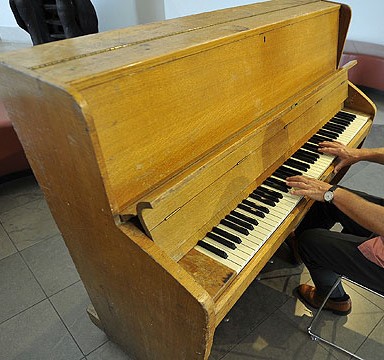 Another interesting observation concerning the verses, as well as the entire song, is that the chords change with almost every measure. The only exception here is to emphasize the song’s title, where the chord change back to “A,” which is the key of the song, comes in on a syncopated beat just before the halfway mark of that measure. It’s quite obvious that McCartney desperately wanted the title of the song to stand out. Another interesting observation concerning the verses, as well as the entire song, is that the chords change with almost every measure. The only exception here is to emphasize the song’s title, where the chord change back to “A,” which is the key of the song, comes in on a syncopated beat just before the halfway mark of that measure. It’s quite obvious that McCartney desperately wanted the title of the song to stand out.
 A structurally identical second verse is next, but with the addition of background “ooh, la, la, la” falsetto vocals sung in unison by John and George repeatedly throughout the first fourteen measures. After this, the first eight-measure bridge is heard, which has Paul harmonizing with himself throughout except for his arching final phrase “knew what I was missing.” This phrase, which is accompanied by John and George’s unison background lines “no I wouldn’t, no I wouldn’t,” acts as a perfect segue into the next verse and becomes the focal high point of the entire track. A structurally identical second verse is next, but with the addition of background “ooh, la, la, la” falsetto vocals sung in unison by John and George repeatedly throughout the first fourteen measures. After this, the first eight-measure bridge is heard, which has Paul harmonizing with himself throughout except for his arching final phrase “knew what I was missing.” This phrase, which is accompanied by John and George’s unison background lines “no I wouldn’t, no I wouldn’t,” acts as a perfect segue into the next verse and becomes the focal high point of the entire track.
 The third structurally identical verse comes next, which has a whole new set of lyrics, unlike their sometimes common practice of simply repeating an earlier verse, such as on “Ticket To Ride” and “Eight Days A Week.” Another vocal element is added at this point, being a high “A” harmony on John’s “ooh, la, la, la” background vocals that is held throughout all the chord changes of the verse. The third structurally identical verse comes next, which has a whole new set of lyrics, unlike their sometimes common practice of simply repeating an earlier verse, such as on “Ticket To Ride” and “Eight Days A Week.” Another vocal element is added at this point, being a high “A” harmony on John’s “ooh, la, la, la” background vocals that is held throughout all the chord changes of the verse.
 After an identical repeat of the bridge, the final verse is repeated but with one more additional element. Mal Evans puts in the above-mentioned Hammond organ note that stretches out until the song fades away. Two unique but hardly-noticeable flubs occur in this verse, one being an unintentional voice being heard at the end of the second measure and the other being a missed tambourine hit by John in the fifteenth verse where the word “see” is heard. After an identical repeat of the bridge, the final verse is repeated but with one more additional element. Mal Evans puts in the above-mentioned Hammond organ note that stretches out until the song fades away. Two unique but hardly-noticeable flubs occur in this verse, one being an unintentional voice being heard at the end of the second measure and the other being a missed tambourine hit by John in the fifteenth verse where the word “see” is heard.
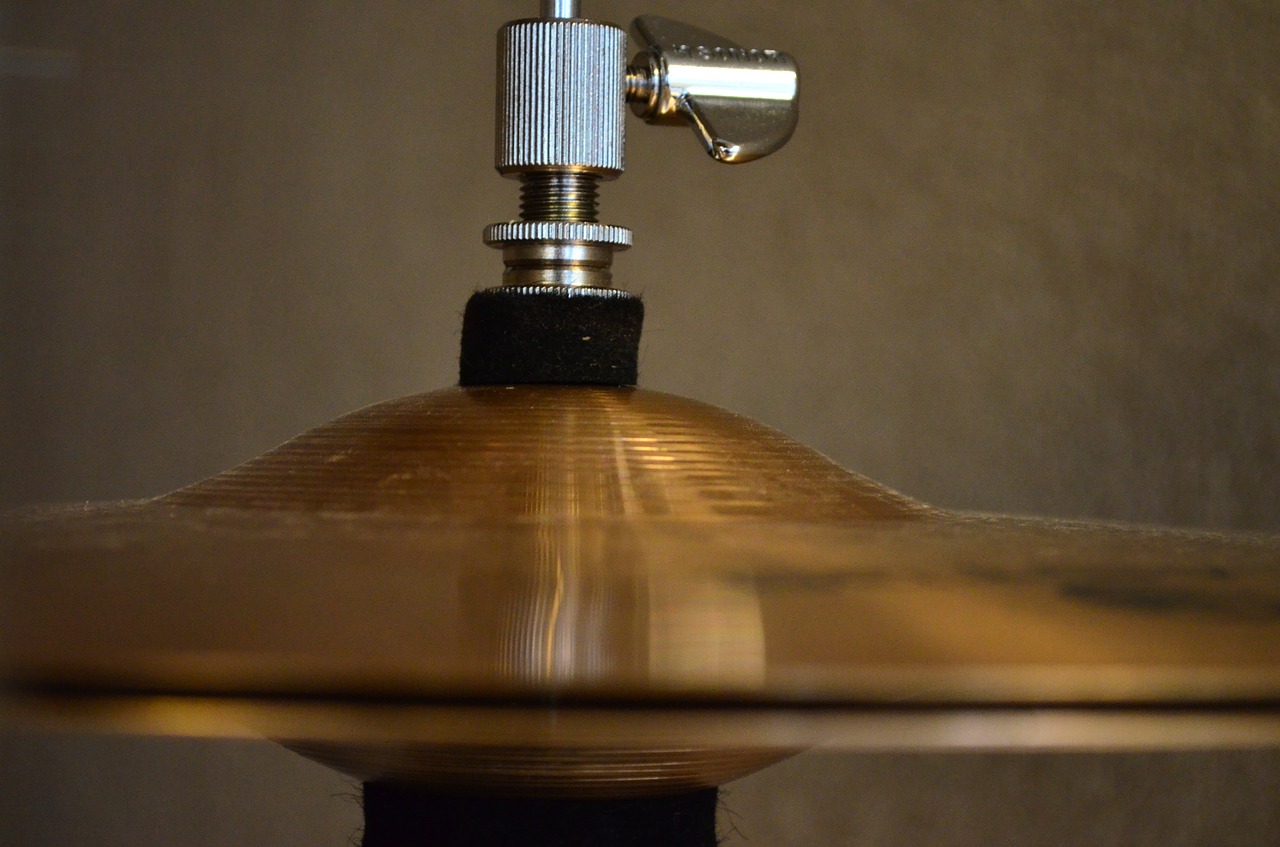 A conclusion then occurs, which is actually the beginning of another verse with almost all of the existing elements continuing as before. The effect is as if this was an ad-libbed ending that should have been faded out but unintentionally was left in. Paul’s excited “hey…c’mon…oh, yeah” vocal lines and handclaps from one of the vocal tracks, along with Ringo’s overdubbed hi-hat accents being missing at the beginning of this conclusion, adds to the argument that we really shouldn’t have been hearing this ending. Whether it should have been there or not, it becomes quite apparent with this ending that they were all having a good time recording the song. It does fade rather quickly, though, and by the sixth measure the song is over. It makes you want to hear more, but the track probably broke down just after the sixth measure anyway. A conclusion then occurs, which is actually the beginning of another verse with almost all of the existing elements continuing as before. The effect is as if this was an ad-libbed ending that should have been faded out but unintentionally was left in. Paul’s excited “hey…c’mon…oh, yeah” vocal lines and handclaps from one of the vocal tracks, along with Ringo’s overdubbed hi-hat accents being missing at the beginning of this conclusion, adds to the argument that we really shouldn’t have been hearing this ending. Whether it should have been there or not, it becomes quite apparent with this ending that they were all having a good time recording the song. It does fade rather quickly, though, and by the sixth measure the song is over. It makes you want to hear more, but the track probably broke down just after the sixth measure anyway.
 Paul’s vocals are very suitable to the sentiment of the lyrics and his harmonies are impeccable as usual. His piano work is also very proficient and is the driving rhythmic component of the proceedings, showing how comfortable he is becoming as a pianist within the band. We surely will be hearing him as the dominant keyboardist in the group as the next few years attest to. Paul’s vocals are very suitable to the sentiment of the lyrics and his harmonies are impeccable as usual. His piano work is also very proficient and is the driving rhythmic component of the proceedings, showing how comfortable he is becoming as a pianist within the band. We surely will be hearing him as the dominant keyboardist in the group as the next few years attest to.
 Paul’s bass performance, although overdubbed, was hardly an afterthought. McCartney recalls: “To me it was very Motown-flavored. It’s got a James Jamerson feel. He was the Motown bass player, he was fabulous, they guy who did all those great melodic bass lines. It was him, me, and Brian Wilson who were doing melodic bass lines at that time, all from completely different angles, LA, Detroit and London, all picking up on what each other did.” Although somewhat low in the mix, Paul’s bass lines are very diverse and imaginative, which suits the song nicely when your bass EQ is set high. Paul’s bass performance, although overdubbed, was hardly an afterthought. McCartney recalls: “To me it was very Motown-flavored. It’s got a James Jamerson feel. He was the Motown bass player, he was fabulous, they guy who did all those great melodic bass lines. It was him, me, and Brian Wilson who were doing melodic bass lines at that time, all from completely different angles, LA, Detroit and London, all picking up on what each other did.” Although somewhat low in the mix, Paul’s bass lines are very diverse and imaginative, which suits the song nicely when your bass EQ is set high.
 George keeps busy with guitar chops on the off-beats as well as some nice harmonies and background vocals. John plays a mean tambourine and is quite happy providing some proficient background harmonies. Ringo plays a much more important role than metronome on this track. He doesn’t hold back from adding a good amount of drum fills throughout the song, mostly at the end of every other measure. One would think that the hi-hat accents were played during his initial rhythm track if it weren’t for hearing his drum fills being played at the same time. Unless Ringo has another set of arms that we don’t know about, the hi-hat accents must have been overdubbed later. George keeps busy with guitar chops on the off-beats as well as some nice harmonies and background vocals. John plays a mean tambourine and is quite happy providing some proficient background harmonies. Ringo plays a much more important role than metronome on this track. He doesn’t hold back from adding a good amount of drum fills throughout the song, mostly at the end of every other measure. One would think that the hi-hat accents were played during his initial rhythm track if it weren’t for hearing his drum fills being played at the same time. Unless Ringo has another set of arms that we don’t know about, the hi-hat accents must have been overdubbed later.
 This being the third in Paul’s recent series of troubled relationship songs (see “We Can Work It Out” and “I’m Looking Through You”), he now emphasizes his frustration at not being able to contact his girl on the phone. Since her “line’s engaged,” he starts out the song by expressing anger, even including the childish cutting remark “act your age.” He throws guilt into the mix by saying, because of both of their tight schedules, “we have lost the time that was so hard to find” and then exaggerates his rage by saying “I will lose my mind if you won’t see me.” This being the third in Paul’s recent series of troubled relationship songs (see “We Can Work It Out” and “I’m Looking Through You”), he now emphasizes his frustration at not being able to contact his girl on the phone. Since her “line’s engaged,” he starts out the song by expressing anger, even including the childish cutting remark “act your age.” He throws guilt into the mix by saying, because of both of their tight schedules, “we have lost the time that was so hard to find” and then exaggerates his rage by saying “I will lose my mind if you won’t see me.”
The second verse finds Paul sincerely questioning why she doesn’t answer, saying “I don’t know why you should want to hide.” Ever the clever lyricist, he throws a double meaning into the last phrase, namely “I can turn away and you won’t see me.” (Some hear this line as “I get turned away” and, if this is the true lyric, I guess it’s not so clever after all!)
 The lyrics in the bridge reveal how his curiosity about her activities are getting the best of him, namely “I wouldn’t mind if I knew what I was missing.” And by the time the last verse rolls around, Paul regresses into pity. His days are “filled with tears” and he views the relationship as over, saying “since I lost you it feels like years.” His sorrow is even depicted in the mournful tone of his final line “I just can’t go on if you won’t see me.” So, from mean-spirited words to self pity, Paul expresses all the emotions of a love gone wrong. The lyrics in the bridge reveal how his curiosity about her activities are getting the best of him, namely “I wouldn’t mind if I knew what I was missing.” And by the time the last verse rolls around, Paul regresses into pity. His days are “filled with tears” and he views the relationship as over, saying “since I lost you it feels like years.” His sorrow is even depicted in the mournful tone of his final line “I just can’t go on if you won’t see me.” So, from mean-spirited words to self pity, Paul expresses all the emotions of a love gone wrong.
American Releases
December 6th, 1965 was the date that the “Rubber Soul” album was first available to American record buyers. Although Capitol did slightly interfere with the running order of the tracks, “You Won’t See Me” still remained the third song on side one. Capitol's version of "Rubber Soul" was released on an individual compact disc on January 21st, 2014, both the mono and stereo versions of the album contained on a single CD.
 It’s interesting to note that the 8-track tape version of this album, which was the first Beatles 8-track on the market (August 1966), cut off the last ten seconds of "You Won't See Me" in order to fit the track within the time constraints of this format. They chose to quickly fade out the song as the final verse ended. Fans that were familiar with this version of “You Won’t See Me” (as I was) were quite surprised to hear the extended ending when they happened upon a vinyl copy of the album at a later time (as I was). It’s interesting to note that the 8-track tape version of this album, which was the first Beatles 8-track on the market (August 1966), cut off the last ten seconds of "You Won't See Me" in order to fit the track within the time constraints of this format. They chose to quickly fade out the song as the final verse ended. Fans that were familiar with this version of “You Won’t See Me” (as I was) were quite surprised to hear the extended ending when they happened upon a vinyl copy of the album at a later time (as I was).
 The first time the original British "Rubber Soul” album was made available in America was with the "Original Master Recording" vinyl edition released through Mobile Fidelity Sound Lab in June of 1984. This album included "You Won't See Me" and was prepared utilizing half-speed mastering technology from the original master tape on loan from EMI. This version of the album was only available for a short time and is quite collectible today. The first time the original British "Rubber Soul” album was made available in America was with the "Original Master Recording" vinyl edition released through Mobile Fidelity Sound Lab in June of 1984. This album included "You Won't See Me" and was prepared utilizing half-speed mastering technology from the original master tape on loan from EMI. This version of the album was only available for a short time and is quite collectible today.
 The new 1986 George Martin stereo mix of the song was included on the April 30th, 1987 released compact disc version of the British “Rubber Soul” album, the vinyl edition coming out on July 21st, 1987. This mix was also utilized when the album was remastered and re-released on September 9th, 2009 on CD and on November 13th, 2012 on vinyl. The new 1986 George Martin stereo mix of the song was included on the April 30th, 1987 released compact disc version of the British “Rubber Soul” album, the vinyl edition coming out on July 21st, 1987. This mix was also utilized when the album was remastered and re-released on September 9th, 2009 on CD and on November 13th, 2012 on vinyl.
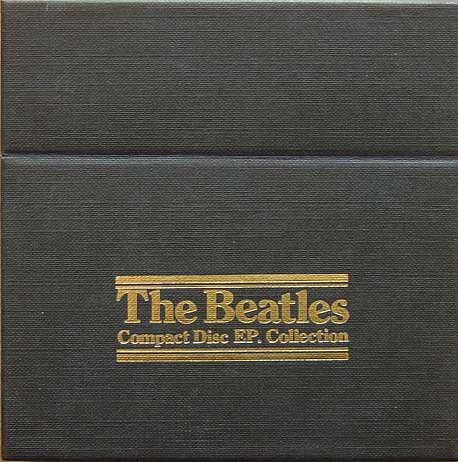 The original mono mix of “You Won’t See Me” got its first American CD release on the box set “Compact Disc EP Collection” on June 30th, 1992. This set included all of the original British EP releases, the song being contained on the July 1966 EP “Nowhere Man.” The original mono mix of “You Won’t See Me” got its first American CD release on the box set “Compact Disc EP Collection” on June 30th, 1992. This set included all of the original British EP releases, the song being contained on the July 1966 EP “Nowhere Man.”
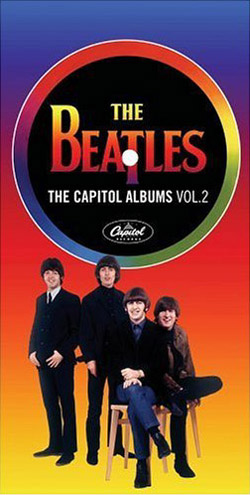 On April 11th, 2006, Capitol released the box set entitled “The Capitol Albums, Vol. 2” which featured the entire American “Rubber Soul” album as it was originally heard in 1965. Of course, “You Won’t See Me” was also included. For initial pressings of this set, Capitol mistakenly presented a "mono type-B" fold down mono mix for the entire "Rubber Soul" album, which was a method that combined both the left and right channels of the stereo mix to create a mono mix. Therefore, the mono mix of "You Won't See Me" in this set was initially prepared in this way, the error being corrected on subsequent pressings. On April 11th, 2006, Capitol released the box set entitled “The Capitol Albums, Vol. 2” which featured the entire American “Rubber Soul” album as it was originally heard in 1965. Of course, “You Won’t See Me” was also included. For initial pressings of this set, Capitol mistakenly presented a "mono type-B" fold down mono mix for the entire "Rubber Soul" album, which was a method that combined both the left and right channels of the stereo mix to create a mono mix. Therefore, the mono mix of "You Won't See Me" in this set was initially prepared in this way, the error being corrected on subsequent pressings.
 For those who want to own the original mono and stereo mixes from 1965 on compact disc, the September 9th, 2009 released remastered “The Beatles In Mono” box set is for you. It contains the entire British “Rubber Soul” album in both mono and stereo but sounding better than they ever did. The vinyl edition of this box set was first released on September 9th, 2014. For those who want to own the original mono and stereo mixes from 1965 on compact disc, the September 9th, 2009 released remastered “The Beatles In Mono” box set is for you. It contains the entire British “Rubber Soul” album in both mono and stereo but sounding better than they ever did. The vinyl edition of this box set was first released on September 9th, 2014.
In promotion of the 2014 box set "The US Albums," a 25-song sampler CD was manufactured for limited release on January 21st, 2014, this containing the mono mix of "You Won't See Me."
 "The Beatles: Rock Band" game
|
Live Performances
Although the game “The Beatles: Rock Band” contains a live Shea Stadium version of “You Won’t See Me,” this was pure fiction. It’s unfortunate that the band never included the song in their 1966 set list, even though it would have worked very nicely.
 Paul McCartney did however think to include the song during his “2004 Summer Tour,” which comprised fourteen European performances in May and June of that year. He then included the song in the set list of his "One On One" tour, which stretched from April 13th, 2016 (Fresno, California) to December 16th, 2017 (at the Mount Smart Stadium in Aukland, New Zealand). Paul McCartney did however think to include the song during his “2004 Summer Tour,” which comprised fourteen European performances in May and June of that year. He then included the song in the set list of his "One On One" tour, which stretched from April 13th, 2016 (Fresno, California) to December 16th, 2017 (at the Mount Smart Stadium in Aukland, New Zealand).
Conclusion
 What many may not realize is that this song was groundbreaking in a whole different way. In an age where the standard pop song usually didn’t tread past the three minute mark, “You Won’t See Me” clocked in at an unprecedented 3:22 (3:25 in mono), which was the longest Beatles track up to that point. While it dwarfs in size next to later accomplishments such as “Hey Jude” and “I Want You (She’s So Heavy),” not to mention Jethro Tull’s full album-length masterpiece “Thick As A Brick,” it did show that The Beatles were eager to "push the envelope" in any way they were allowed to. What many may not realize is that this song was groundbreaking in a whole different way. In an age where the standard pop song usually didn’t tread past the three minute mark, “You Won’t See Me” clocked in at an unprecedented 3:22 (3:25 in mono), which was the longest Beatles track up to that point. While it dwarfs in size next to later accomplishments such as “Hey Jude” and “I Want You (She’s So Heavy),” not to mention Jethro Tull’s full album-length masterpiece “Thick As A Brick,” it did show that The Beatles were eager to "push the envelope" in any way they were allowed to.
Song Summary
“You Won’t See Me”
Written by: John Lennon / Paul McCartney
-
Song Written: October / November, 1965
-
Song Recorded: November 11, 1965
-
First US Release Date: December 6, 1965
-
-
US Single Release: n/a
-
Highest Chart Position: n/a
-
British Album Release: Parlophone #PCS 3075 “Rubber Soul”
-
Length: 3:22 (stereo) 3:25 (mono)
-
Key: A major
-
Producer: George Martin
-
Engineers: Norman Smith, Ken Scott
Instrumentation (most likely):
- Paul McCartney - Lead and Harmony Vocals, Piano (1964 Challen upright 861834), Bass Guitar (1964 Rickenbacker 4001S), handclaps
- George Harrison – Rhythm Guitar (1961 Sonic Blue Fender Stratocaster), Backing Vocals
- John Lennon - Backing Vocals, tambourine
- Ringo Starr – Drums (1964 Ludwig Super Classic Black Oyster Pearl)
- Mal Evans - Organ (Hammond RT-3)
Written and compiled by Dave Rybaczewski
|
IF YOU WOULD LIKE TO MAKE A DONATION TO KEEP THIS WEBSITE UP AND RUNNING, PLEASE CLICK BELOW!
Sign Up Below for our MONTHLY BEATLES TRIVIA QUIZ!
|